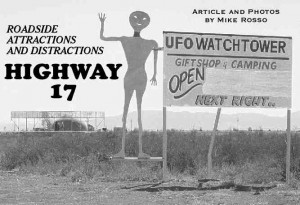Brief by Central Staff
Politics – October 2002 – Colorado Central Magazine
As you may have noticed, this is an election year. And for many of us, we’ll be choosing among unfamiliar candidates because Colorado has new districts for Congress, the state Senate, and the state House of Representatives. The lines had to be redrawn to reflect the population changes that were enumerated in the 2000 census.
In the “good old days” — that is, after the 1990 census — Central Colorado was almost a political unit. Most of our territory was in the Third Congressional District (Republican Scott McInnis of Grand Junction), the Fourth State Senate District (Democrat Linda Powers of Crested Butte, followed by Republican Ken Chlouber of Leadville), and the 61st State House District (Chlouber, followed by Democrat Carl Miller of Leadville).
But Colorado’s population has grown, so the boundaries had to change. And Central Colorado got chopped up in the process.
Before this election, we were all (except for western Frémont County) in the Third Congressional District. Now we’re divided between the Third (Western Slope and the San Luis Valley) and the Fifth (Chaffee, Lake, Park, Frémont, and El Paso).
Third District congressional candidates are Democrat Denis Berckefeldt, Republican incumbent Scott McInnis, and Gary Swing of the Natural Law Party.
In the Fifth, Democrat Curtis Imrie of Nathrop is challenging Republican incumbent Joel Hefley of Colorado Springs.
State senators serve four-year terms, and Senate District 4 came up in 2000, so there’s no election this year for that seat, held by Ken Chlouber. The boundaries have certainly changed, though. The district used to extend from Park County west across the central mountains. Now it stretches east from Lake County, clear to Douglas and El Paso counties.
What that means in the 2004 election is that most of the population of the district will no longer be rural, but suburban.
Most of the rest of Central Colorado, along with the San Luis Valley, is now in Senate District 5. Candidates are Libertarian Sandra Davies Johnson, Democrat John L. Klomp, and Republican incumbent Lewis H. Entz.
Frémont and Custer counties, and points south and east, are now in Senate District 2. There is no incumbent running. Candidates are Democrat Dan Slater, Libertarian James G. Healey, and Republican Kenneth Kester.
House District 61, represented by Democrat Carl Miller of Leadville, used to extend south from Lake County. Now Lake is in District 56, and it goes north, taking in Summit and most of Eagle.
That may reflect modern reality, with Leadville tied to the I-70 Sacrifice Zone, but it also means that most of us are going to lose Carl Miller as our state representative. And we’ll miss him — Carl works hard for his constituents.
His opponent this year is Republican Heather C. Lemon.
South of Lake County, much of Central Colorado is in House District 60. The incumbent is Republican Lola Spradley of Beulah, and the challenger is Democrat Emily Tracy of Cañon City.
House District 61 now includes eastern Garfield County (Glenwood Springs), along with Pitkin and Gunnison counties. The incumbent is Republican Gregg Rippy, and he is challenged by Abba Krieger, party unknown to us, and Democrat Rick Davis.
Most of the San Luis Valley is now in House District 62, where Democrat John T. Salazar is challenging incumbent Republican Jim Snook.
That’s a lot of politics to follow, especially when you realize how unpopulated our part of the state is — which may explain how we became so politically fragmented, by being a “fringe area” away from population centers that might complain.
Granted, it might have been possible to draw political boundaries that were worse for Central Colorado. But they would have had to work at it.

